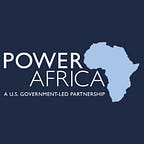Providing Relief for Eswatini Electricity Consumers and Transparency for Energy Investors
In Eswatini, Power Africa support to the energy regulator will result in lower electricity tariffs, saving consumers around $44 million over the next two years.
Fair regulation in the energy sector creates an environment where utilities can provide reliable services to customers at reasonable prices, and gives the private sector confidence to invest in new power projects.
Balancing Utility Financial Needs and Affordability for Customers
In October 2020, the Eswatini Electricity Company (EEC) applied for an average tariff increase of 7.16 percent for each of the next two financial years, through 2023. This application triggered a tariff review by the Eswatini Energy Regulatory Authority (ESERA), a typical step in a regulated energy market. The role of the regulator — in this case ESERA — is to balance the need for utilities to charge tariffs that cover their return on invested capital with a drive to maintain affordability for consumers. By managing these competing interests, regulators can move utilities towards creditworthiness without government guarantees.
Tariff reviews do not always result in increases. When a country’s economic circumstances justify it, regulators can decrease tariffs. Setting cost-reflective tariffs helps create conditions where consumers pay a fair price for electricity.
Power Africa Support to ESERA’s Tariff Review
To help achieve this balance of interests, ESERA requested Power Africa’s assistance in evaluating certain parts of EEC’s tariff application. Power Africa guided ESERA in determining the regulatory asset base, the weighted average cost of capital, and staffing costs, among other items.
ESERA adopted Power Africa’s recommendation to consider a 10 percent reduction in the regulatory asset base, a reduction in the weighted average cost of capital from 7.92 percent to 7.28 percent, and the imposition of a 1 percent productivity factor on wage and salary expenses.
Following guidance from Power Africa, ESERA also did not allow depreciation expense on non-utility-funded assets, which on its own saved Eswatini ratepayers $5.1 million.
Saving Consumers $44 Million
In its final decision, ESERA authorized tariffs that would result in a revenue requirement of $154 million in 2021 to 2022 and $174 million in 2022 to 2023. The authorized amounts were approximately $21 million and $23 million less than the requested amounts, yielding a savings of $44 million to Eswatini consumers. The new tariffs became effective on 1 April 2021.
ESERA also adopted other Power Africa recommendations, including a requirement that the EEC conduct studies to determine appropriate staffing levels and the proper debt-equity ratio.
The Impact of Lower Tariffs
The tariff decreases allowed ESERA to adjust the amounts that business customers pay for electricity. Historically, business customers have spent more than their actual cost of service and have subsidized domestic customers’ electricity bills. A tariff decrease gives ESERA some flexibility to rebalance the rates paid by both classes of customers and reduces the probability that business customers will leave the grid and generate their own electricity.
“The Authority would like to extend appreciation to the USAID Southern Africa Energy Program, a Power Africa initiative, for the assistance and guidance provided during the tariff review, as well as the level of commitment and professionalism with which it was delivered” — Vusumuzi Mkhumumane, CEO, ESERA
Simplifying Connection Charges
During the public meetings on the tariff application, customers in Eswatini voiced concern that connection charges were difficult to understand and that the method used to calculate them was not transparent.
At ESERA’s request, Power Africa reviewed EEC’s connection charge practices for transparency and clarity and examined whether they conformed to the ESERA connection charge draft guidelines. Following a thorough review of EEC connection charge documentation, coupled with direct feedback to queries from EEC, Power Africa provided recommendations to ESERA in July 2021, offering alternative approaches to imposing connection charges, including some significant enough to require modifications to ESERA’s draft guidelines.
Additional transparency and predictability will promote the credibility of both EEC and ESERA and may, at the margins, increase connections in the country, since potential applicants for electricity service will better understand how the national utility calculates charges.
